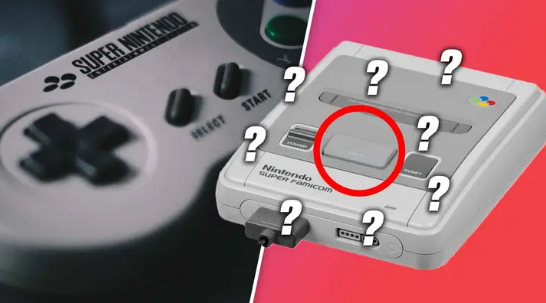There are too many words about the Super Nintendo’s pointless Eject Button
The Super Nintendo Entertainment System, also known as the SNES, was finally available to British gamers on April 11, 1992. It’s now 30 years old as of April 11, 2022. It’s amazing how fast the years go. Today’s players won’t remember what it was like for them to wait over a year before they could get the new console. Modern Xboxes and PlayStations all come out around the same time worldwide (not that this release model guarantees stock in your area); however, the SNES first appeared in Japan as the Super Famicom in November 1990 and was redesigned into the ugly squared-off SNES in August 1991. This was a long wait, here on these shores.
The Super Nintendo was instantly thrown into a sales war against the 16-bit SEGA mega drive, a ‘console battle’ that began in the 8-bit generation with NES and Master System. It continued to divide families and friendship groups. Was Sonic really lame or Mario stupid? Who cares? Both the Mega Drive and SNES were home to many amazing video games, many still in use today.
With 20/20 vision, the SNES can be seen as a superior system to any SEGA diehards (guilty, shame) at the time. Six buttons were now the norm, instead of just two or three. There were four buttons on the forehead and one on each side. The Mode 7 graphics capabilities of the controller, which were showcased in the launch title F-Zero, were unmatched by any other. Its Sony-made sound chip-enabled some truly amazing soundtracks. However, it is important to not dwell on the complicated relationship between Nintendo & Sony over the years.
The SNES’s slap-bang button in the middle was something quite different from the console designs of SEGA and Atari (whose 2600 Jr is still around), Neo Geo, NEC, and Neo Geo. (The PC Engine/TurboGrafx-16 was marketed as the first 16-bit console back in 1987). Whether you were looking at a Japanese Super Famicom or an American beast, the EJECT button was always there. You could remove any cartridges from your SNES by pressing this large, neatly curved button. pop then your game will jump up. Here’s the problem: Why?
The end of 16-bit technology saw Nintendo release a new SNES, with the N64 on sale worldwide. This was to appeal to people who are just starting to discover the brand and want to access a large library of software. The SNS-101 or New-Style Super NES was released in North America in Oct 1997, and in Japan in April 1998. Although it lacks certain features, this is a small and elegant piece of tech that will appeal to latecomers. One button stands out, however: The enormous eject button.
How is it possible that two versions of SNES, actually three, had an ejector button while two later models didn’t? It’s not as complicated as you might think.







